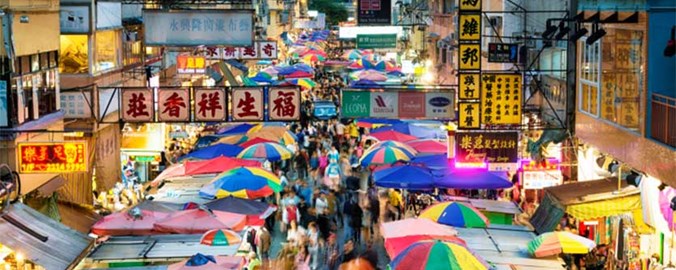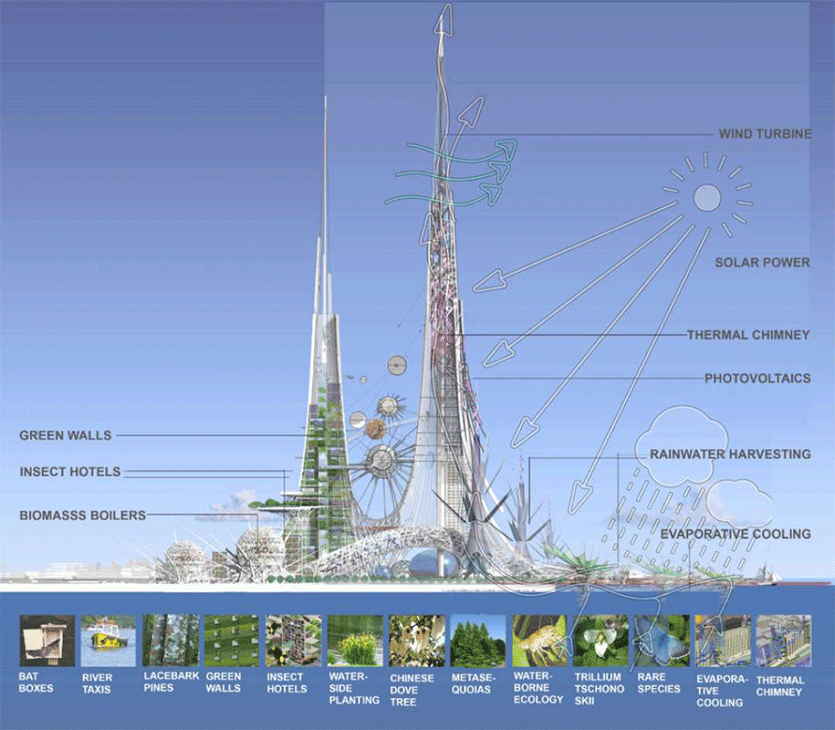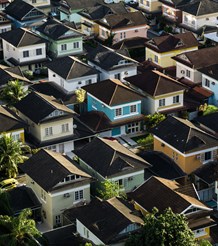
World's Tallest Building To Purify Environment
At 1km high, the Phoenix Towers will become the tallest structure in the world when completed in Wuhan, China at a cost of around €1.9bn. Despite the huge cost of constructing the super-skyscraper, its high-tech eco-design is set to be of immeasurable benefit to the surrounding environment.
Designed by London-based Chetwoods Architects in partnership with HuaYan Group, the project is to consist of two buildings, representing the male and female dualistic aspects of Chinese culture. The two towers will protrude from the ground like two massive stalagmites, glowing pink at night and will be constructed on an island in a lake, covering a 7-hectare site.
The taller 'Feng' tower will have around 100 floors for residential living, offices and retail space and the slightly smaller 'Huang' tower will contain what its designers describe as 'the world's tallest garden'.
The eco-aspects of the super-skyscraper include a complex mechanical system to simultaneously filter Wuhan's water, collect solar, wind and hydrogen power, provide produce from a massive vertical garden, harvest rainwater, boil biomass, becoming the region's 'lungs'.

Chinese developers HuaYan's name derives from the name of a sect of Buddhism and the Phoenix Towers have been designed by Chetwoods specifically to resonate with local religion and philosophy. The towers link Western technology and architecture to the Chinese myths of the phoenix and the spirit of re-birth.
The design of the structure bears a resemblance to a modern interpretation of the Eiffel Tower, and its ecological importance brings another dimension altogether. Set in the capital city of Wuhan in central China, known locally as the 'city of 1000 lakes' and with a population of 10 million.
Designed as not only a destination for eco-tourism, the Phoenix Towers will have plazas and streets leading from their bases, featuring different foreign cultures. A Turkish plaza is to contain a bazaar-style market; a Japan street featuring Japanese restaurants and shops will replicate 'neon rather than cherry blossom' modern-day Japan and a France zone will include a reproduction of a typical French street.
Chetwoods Architects' founder Laurie Chetwood said: "In China, if you come up with a slightly mad idea, it's almost not mad enough. It's the opposite of the UK. It was blatantly iconic. They wanted to take the Eiffel Tower experience on a stage further. It doesn't just stand there and become an iconic symbol of Wuhan it has to do a job. We've applied as many environmental ideas as we possibly could to justify the shape and the size of them".
"The Chinese are very commercially minded as you can imagine. This is a big tourist idea right in one of the largest lakes in Wuhan. They've turned on to the environmental idea but there's always obviously the commercial element at the base of it," he added.


